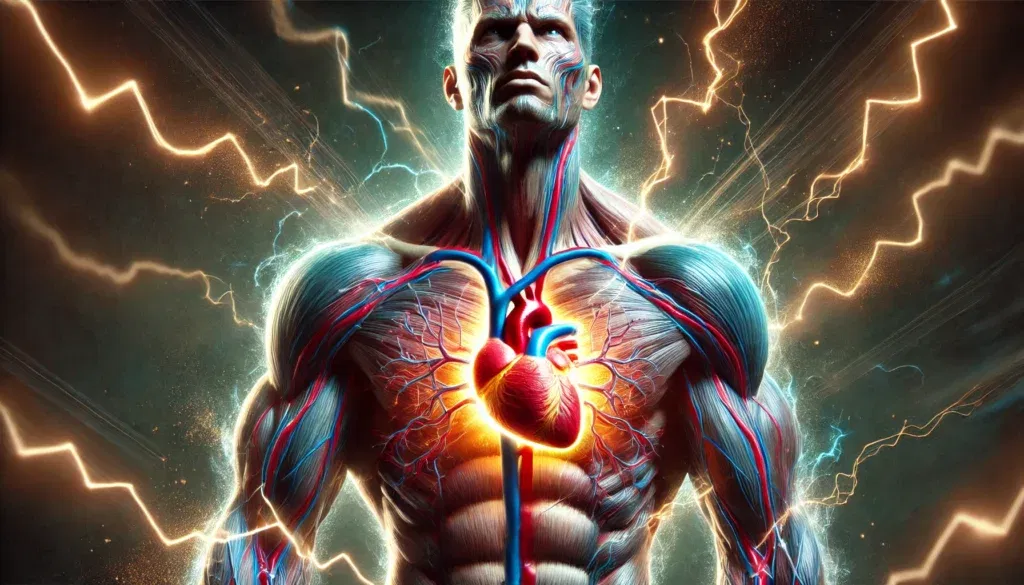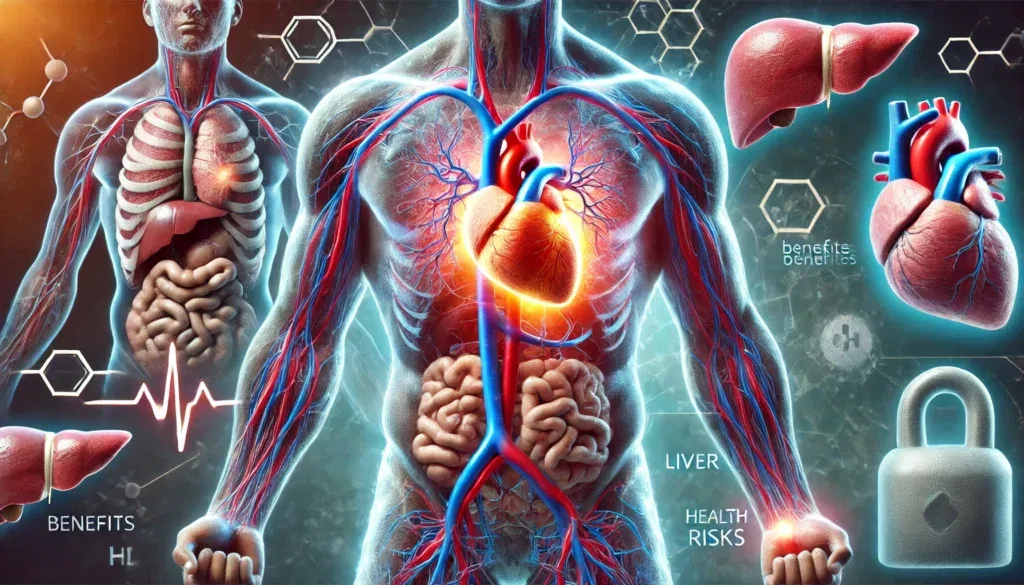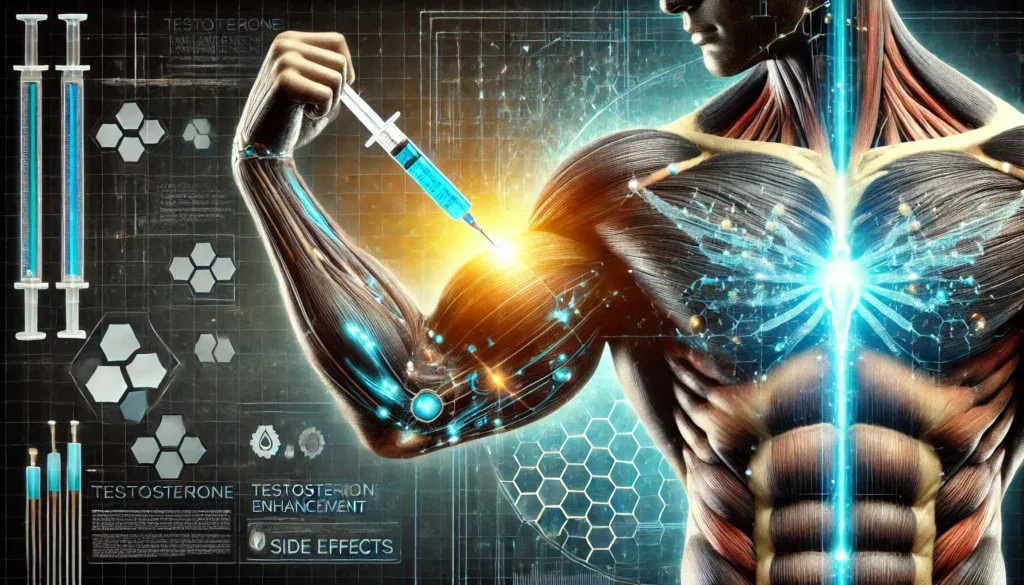The use of anabolic steroids to boost testosterone levels has long been a controversial topic in the world of fitness, bodybuilding, and medicine. While some athletes and fitness enthusiasts turn to steroids to accelerate muscle growth and improve performance, there are serious implications tied to altering testosterone levels artificially. Understanding the effects of test levels on steroids is crucial to making informed decisions about their use, as these substances can lead to both significant benefits and severe health risks.
You may also like: How to Get Your Testosterone Levels Checked: Best At-Home and Lab Testing Options
Understanding Testosterone and Its Natural Role in the Body
Testosterone is the primary male sex hormone, responsible for the development of male characteristics such as increased muscle mass, bone density, and body hair. It plays an essential role in various bodily functions, including reproductive health, red blood cell production, and mood regulation. While both men and women produce testosterone, men have significantly higher levels, which contribute to their physiological traits. Natural testosterone production is regulated by the hypothalamic-pituitary-gonadal (HPG) axis, which ensures balance in hormone levels.
When individuals introduce anabolic steroids, they override the body’s natural testosterone production, leading to drastically elevated hormone levels. This artificial increase in test levels on steroids can produce rapid muscle gains and enhanced athletic performance. However, this disruption of the body’s hormonal balance can lead to a cascade of both short-term and long-term effects, many of which are detrimental to overall health.

Benefits of Elevated Testosterone Levels Due to Steroid Use
For individuals seeking to enhance their physical capabilities, the appeal of high testosterone levels on steroids is undeniable. Increased testosterone levels can lead to accelerated muscle hypertrophy, allowing users to achieve significant muscle mass in a shorter time than natural training alone. This process occurs because testosterone enhances protein synthesis, the biological mechanism through which muscle tissue is repaired and grown after exercise.
Another well-documented benefit is improved strength and endurance. Athletes who use anabolic steroids often report increased stamina and power, allowing them to push past previous performance limits. This can be particularly appealing for bodybuilders, powerlifters, and competitive athletes looking to gain an edge over their peers.
Additionally, testosterone plays a role in fat metabolism, and elevated levels can help users achieve a leaner physique. Many steroid users find that they are able to reduce body fat percentage while maintaining or even increasing muscle mass. This makes steroids attractive not only to athletes but also to those looking to achieve an aesthetically muscular body.
Beyond physical benefits, higher testosterone levels can influence mental states, leading to increased confidence, aggression, and motivation. Many users report improved focus and a heightened sense of determination, which can contribute to both athletic and professional success.
Short-Term Side Effects of Steroid Use on Testosterone Levels
While the initial benefits of test levels on steroids can seem promising, the short-term consequences cannot be ignored. One of the most immediate effects of anabolic steroid use is suppression of natural testosterone production. When the body detects high levels of exogenous testosterone, it reduces or even shuts down its own production, leading to testicular atrophy, reduced sperm production, and potential infertility.
Another common issue is the hormonal imbalance caused by excess testosterone converting into estrogen. This process, known as aromatization, can lead to gynecomastia, or the development of breast tissue in men. Water retention, bloating, and increased fat deposition in the chest area are also common side effects.
Additionally, steroids can lead to severe acne, oily skin, and hair loss. These dermatological effects occur because elevated testosterone levels increase sebum production, which can clog pores and cause breakouts. Individuals with a genetic predisposition to male pattern baldness may experience accelerated hair thinning and loss due to increased levels of dihydrotestosterone (DHT), a derivative of testosterone.
Psychological side effects are also a significant concern. Users often experience mood swings, irritability, and heightened aggression, commonly referred to as “roid rage.” This increase in aggressive behavior can strain relationships and lead to impulsive decision-making. In some cases, long-term steroid use has been linked to symptoms of anxiety and depression, particularly when users cycle off steroids and experience withdrawal effects.
Long-Term Health Risks of Steroid-Induced High Testosterone Levels
While short-term side effects can be concerning, the long-term consequences of artificially increasing testosterone levels on steroids can be even more severe. One of the most significant risks is cardiovascular disease. Elevated testosterone levels can contribute to increased LDL cholesterol (bad cholesterol) and decreased HDL cholesterol (good cholesterol), leading to a higher risk of hypertension, arteriosclerosis, and heart attacks.
Liver damage is another major concern, particularly with oral anabolic steroids. These substances must be metabolized by the liver, and prolonged use can lead to hepatotoxicity, increasing the risk of liver disease, tumors, and even liver failure. Users may experience elevated liver enzymes, jaundice, and digestive issues as early warning signs of liver damage.
The endocrine system also suffers from prolonged steroid use. Chronic suppression of natural testosterone production can result in long-term hypogonadism, where the body fails to restore normal testosterone levels even after discontinuing steroids. This can lead to persistent low libido, erectile dysfunction, muscle loss, fatigue, and depression. Some users require hormone replacement therapy (HRT) to mitigate these effects, but this creates a lifelong dependence on synthetic hormones.
Beyond physical health, steroid abuse has been linked to cognitive impairments and psychiatric disorders. Studies have shown that prolonged use can alter brain chemistry, affecting memory, impulse control, and emotional regulation. Some users experience severe withdrawal symptoms, including suicidal thoughts, as their hormone levels struggle to rebalance.
The Importance of Post-Cycle Therapy (PCT) and Recovery
For those who have used steroids or are considering their use, post-cycle therapy (PCT) is a crucial aspect of mitigating the negative effects of fluctuating testosterone levels. PCT involves using medications such as selective estrogen receptor modulators (SERMs) and aromatase inhibitors to restore natural testosterone production and minimize estrogen-related side effects. Drugs like Clomid and Nolvadex help stimulate the body’s hormonal axis to resume normal function.
However, even with PCT, full recovery of natural testosterone levels can take months or even years, depending on the duration and intensity of steroid use. Some users find that their bodies never fully recover, leading to lifelong hormonal imbalances that require medical intervention.

Frequently Asked Questions (FAQ) About Testosterone Levels on Steroids
1. How do testosterone levels change when using steroids?
Testosterone levels on steroids experience a significant increase due to the external administration of synthetic testosterone or anabolic steroids. This surge leads to enhanced muscle growth, increased strength, and faster recovery times. However, the body detects the excessive levels and often reduces or shuts down natural testosterone production as a response. This suppression can cause complications post-cycle, making post-cycle therapy (PCT) essential to restore hormonal balance. Understanding the interplay between natural and synthetic testosterone is crucial for those considering steroid use.
2. What happens to natural testosterone production when steroid use stops?
When an individual stops using steroids, testosterone levels of steroid users typically crash due to the suppression of natural production during the cycle. Since the body has been receiving an external supply, it reduces or halts its own production. This sudden drop can lead to symptoms such as fatigue, mood swings, depression, and loss of muscle mass. Recovery varies by individual and depends on factors like cycle duration, dosage, and whether post-cycle therapy is used. Without proper recovery strategies, it may take months for natural testosterone levels to return to baseline.
3. Can long-term steroid use permanently damage testosterone production?
Prolonged use of steroids can lead to lasting suppression of natural testosterone production, making it difficult for some users to recover fully. In extreme cases, testosterone levels on steroids can remain disrupted for years, necessitating medical intervention such as testosterone replacement therapy (TRT). Factors such as age, genetics, and prior health conditions influence the extent of damage. Regular blood tests and medical supervision are critical for those using steroids long-term. Taking precautions, such as cycling properly and using PCT, can help mitigate permanent suppression.
4. How do testosterone levels of steroid users compare to natural levels?
Testosterone levels of steroid users can be significantly higher than those of individuals who produce testosterone naturally. While natural levels typically range from 300 to 1,000 ng/dL, steroid users may experience levels exceeding 2,000 to 5,000 ng/dL, depending on dosage and type of steroids used. These elevated levels contribute to increased muscle growth and recovery speed but also elevate risks such as cardiovascular strain, liver toxicity, and mood instability. Maintaining awareness of these levels is essential for responsible steroid use and overall health management.
5. Can diet and lifestyle influence testosterone levels on steroids?
While steroids artificially elevate testosterone, diet and lifestyle still play a crucial role in optimizing overall hormonal balance. Nutrient-rich foods like lean proteins, healthy fats, and zinc-rich foods support hormone function. Regular exercise, especially resistance training, further enhances the anabolic effects of increased testosterone levels. On the other hand, stress, poor sleep, and excessive alcohol consumption can counteract some benefits by increasing cortisol levels, which negatively impacts testosterone. Even when using steroids, maintaining a holistic approach ensures better health outcomes.
6. How does steroid dosage impact testosterone levels?
Higher dosages of anabolic steroids result in exponentially increased test levels on steroids, but this also raises the risk of severe side effects. Users taking larger doses often experience more pronounced muscle gains, but they also face greater suppression of natural testosterone production and a higher likelihood of adverse effects such as gynecomastia, high blood pressure, and organ stress. Finding a balance between efficacy and safety is key, and medical monitoring can help regulate hormone fluctuations effectively.
7. Are there natural ways to restore testosterone after a steroid cycle?
Post-cycle therapy (PCT) is essential for restoring normal testosterone levels after steroid use. Medications such as selective estrogen receptor modulators (SERMs) like Clomid or Nolvadex are commonly used to stimulate natural testosterone production. Additionally, natural strategies such as resistance training, adequate sleep, and consuming testosterone-boosting foods can support recovery. Some supplements, like D-aspartic acid and fenugreek, may also aid in increasing testosterone levels naturally. However, severe suppression may require professional medical intervention for full recovery.
8. How do different steroids affect testosterone levels?
Various anabolic steroids impact testosterone levels differently depending on their potency, half-life, and mechanism of action. For example, testosterone enanthate and cypionate lead to sustained elevated testosterone levels, while compounds like trenbolone or nandrolone suppress natural production more aggressively. Oral steroids, such as Dianabol, cause sharp increases in test levels on steroids but also put more strain on the liver. Understanding these differences helps users make informed choices and better manage side effects.
9. Can testosterone levels on steroids influence mental health?
Elevated testosterone levels on steroids can significantly impact mood, often leading to increased aggression, heightened confidence, and improved focus. However, abrupt hormonal changes can also cause anxiety, irritability, and mood swings. Post-cycle testosterone crashes often contribute to depression and low energy levels. Managing hormonal fluctuations with proper cycle planning, PCT, and mental health support can help mitigate negative psychological effects. Maintaining stable hormone levels is critical for both physical and mental well-being.
10. What are the signs of dangerously high testosterone levels from steroid use?
Extremely high testosterone levels of steroid users can lead to serious health complications. Common warning signs include severe acne, high blood pressure, abnormal hair growth patterns, and increased risk of cardiovascular issues. Psychological effects, such as paranoia, aggression, or mood instability, may also arise. Long-term exposure to excessive testosterone can contribute to organ damage, particularly in the liver and heart. Monitoring levels through blood tests and adjusting dosage accordingly is essential to reducing these risks.

Conclusion: Making an Informed Decision About Steroid Use
Given the extensive risks and potential benefits, individuals considering steroid use must weigh their options carefully. Consulting with a healthcare professional, undergoing regular blood tests, and monitoring one’s health markers can help mitigate some risks. However, no amount of monitoring can completely eliminate the dangers associated with long-term steroid use.
Ultimately, while elevated testosterone levels on steroids can provide short-term advantages in muscle growth and performance, the health consequences can be severe and irreversible. For those looking to enhance their testosterone levels naturally, lifestyle modifications such as strength training, proper nutrition, adequate sleep, and stress management offer a safer and more sustainable approach.
testosterone therapy risks, anabolic steroids side effects, natural testosterone boosters, hormone replacement therapy dangers, performance-enhancing drugs, steroid withdrawal symptoms, PCT after steroids, bodybuilding and testosterone, cardiovascular risks of steroids, fertility and steroid use, muscle growth without steroids, liver damage from steroids, long-term effects of steroids, steroid addiction, testosterone suppression, endocrine system recovery, strength training and hormone balance, boosting testosterone naturally, steroid-induced aggression, mental health effects of steroids
Further Reading:
What Are the Risks of Steroid Use?
Disclaimer: The information provided in this article is for general informational purposes only. The content does not constitute professional advice of any kind, including but not limited to medical, legal, or financial advice. HisHealthMag and its contributors make no representations or warranties regarding the accuracy, completeness, or reliability of the information presented. Always seek the advice of a qualified professional for any specific concerns or questions you may have. Neither HisHealthMag nor its authors assume any responsibility or liability for any actions taken based on the information provided in this article. The views and opinions expressed are those of the author(s) and do not necessarily reflect the official policy or position of HisHealthMag.





